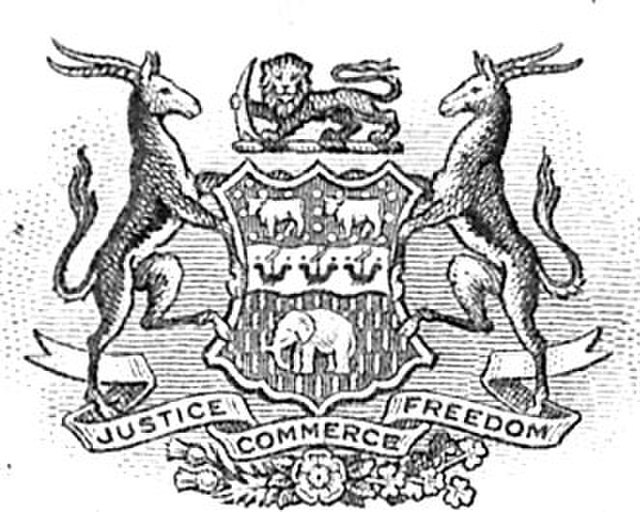British South Africa Company
The British South Africa Company was chartered in 1889 following the amalgamation of Cecil Rhodes' Central Search Association and the London-based Exploring Company Ltd, which had originally competed to capitalize on the expected mineral wealth of Mashonaland but united because of common economic interests and to secure British government backing. The company received a Royal Charter modelled on that of the British East India Company. Its first directors included The 2nd Duke of Abercorn, Rhodes himself, and the South African financier Alfred Beit. Rhodes hoped BSAC would promote colonisation and economic exploitation across much of south-central Africa, as part of the "Scramble for Africa". However, his main focus was south of the Zambezi, in Mashonaland and the coastal areas to its east, from which he believed the Portuguese could be removed by payment or force, and in the Transvaal, which he hoped would return to British control.

The first board of directors of the British South Africa Company, 1889. Top Row: Horace Farquhar; Albert Grey; Alfred Beit. Middle Row: the Duke of Fife; C. J. Rhodes (Founder and managing director in South Africa); the Duke of Abercorn. Bottom Row: Lord Gifford, V.C.; Herbert Canning(Secretary); George Cawston.
British South Africa Company stamp used to validate emergency issue currency for use in Bulawayo, authorized by Hugh Marshall Hole.
The arms of the British South Africa Company
A chartered company is an association with investors or shareholders that is incorporated and granted rights by royal charter for the purpose of trade, exploration, or colonization, or a combination of these.
Share certificate of the Stora Kopparberg mine, dated 16 June 1288
The British East India Company's headquarters in London





